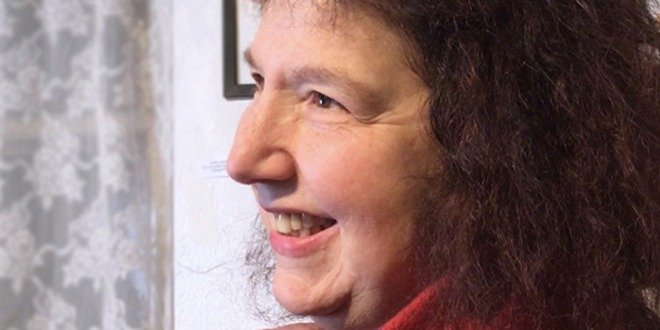
Today I am going to share my story of living with diabetes, and some of the challenges and positive changes that I’ve encountered. I also will speak to the intersection of trauma and its effects on living with a chronic illness.I wasdiagnosed with type 2 diabetes in 2007.
I experienced sexual abuse and violence as a child and it disconnected me from my body. I had no idea that I was living my life disassociated and separate from myself as a way of coping with the aftermath of violence. I didn’t understand that my experiences growing up affected my ability to learn. Eventually, I was diagnosed with a learning disability.As I have chosen to undertake a deep healing process, my ability to learn and acquire skills have improved through the years.
I live with anxiety, depression and post-traumatic stress disorder (PTSD), and I am in recovery from an eating disorder that continues to healover time. I have come to realize that my relationships with both of my parents were complex, with an absence of protection and safety, and with food being used as both reward and punishment.From the age of 10, I was subjected to restrictive diets that led to bingeing and restrictionlater in my life.
For the past 15years, I have seen a therapist who works from a body-centred process,using mindfulness training in a trauma-informed therapy approach called sensorimotor psychotherapy.My therapist and I have built a healthy attachment based upon trust, mutual respect, boundaries and – most importantly –safety. This healthy relationship with my therapist has helped to shift my own way of caring for myself in my diabetes management. We continually work onwhat it means to nourish myself without using food as a defense mechanism.
As I work on establishing consistency without creating crisis, I focus on making changes. I still binge at times – although not as often – and I understand the triggers of emotional overwhelm. I have learned to pause and turn towards other tools to help me.
I live more in my body and understand my own feelings, and I focus on staying with what is present –with all of its causes and conditions –knowing that feeling issimply feeling and need not always be appeased with food. It is a compassionate practice and process to walk this path in a gentle way.
I continue to learn to manage my diabetes by making small, incremental changes and repeating those changes to ensure that they become a part of new patterning. Living with diabetes has been a teacher for me. I have become more embodied while taking my glucose blood levels. Previously, I watched my own fear with taking the needle and pricking myself, worried that an old memory (a flashback) would emerge. Now, I know that I am in the present, and that this action is supporting me to monitor my diabetes, not hinder me.
Anything new has always seemed challenging to me. It is a process of unlearning what was deeply embodied, feeling new movements emerge and trusting that my brain is rewiring itself. I am still acquiring skills. I find that I am not broken, and I often catch myself in my own well-practiced patterns. I have been cultivating a different lens of curiosity, using art and writing as my mediums.
In her work-in-progress manuscript: “Bad, Wrong, Stupid, Don’t Belong; Shifting Perspectives on Learning,” Dr. Jenny Horsman writes:
The metaphor of mosaic and the visceral experience of breaking the china apart, adding more pieces, creating new pattern and shape, seeing how colour change in different combinations, gluing them, levering them up when we don’t like them, finally creating a new picture melded together with grout. Now we can see the pieces afresh, see our capacity to create change, to renew. If we let our experiences break us open, as we broke the plate apart, if we can dare to trust that we can rework our lives, making space for new additions that might create beautiful new patterns, then we may discover new beauty in our selves too.
I am in the process of writing more about recovering, and the intersection of trauma and how it affects my ability to learn in the aftermath of violence. My hope is that in sharing part of my story, a dialogue will ensue. You can contact me at shericohen@rogers.com.

